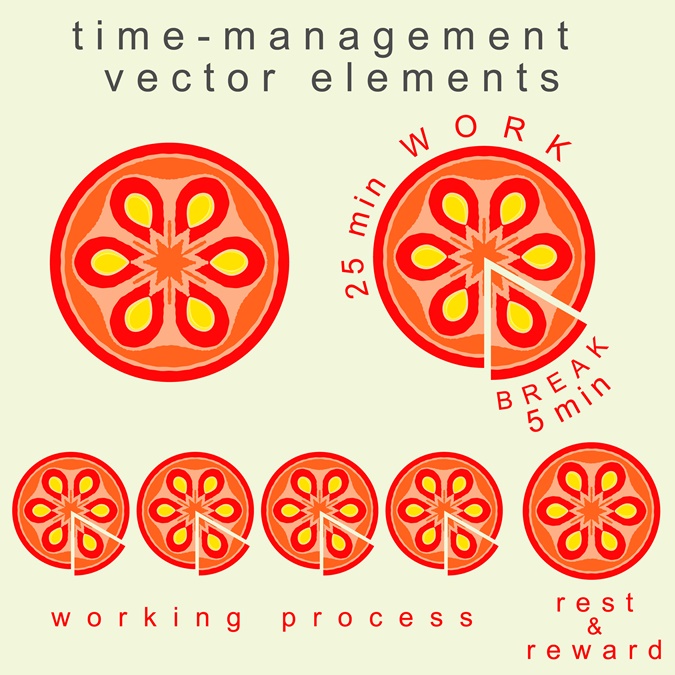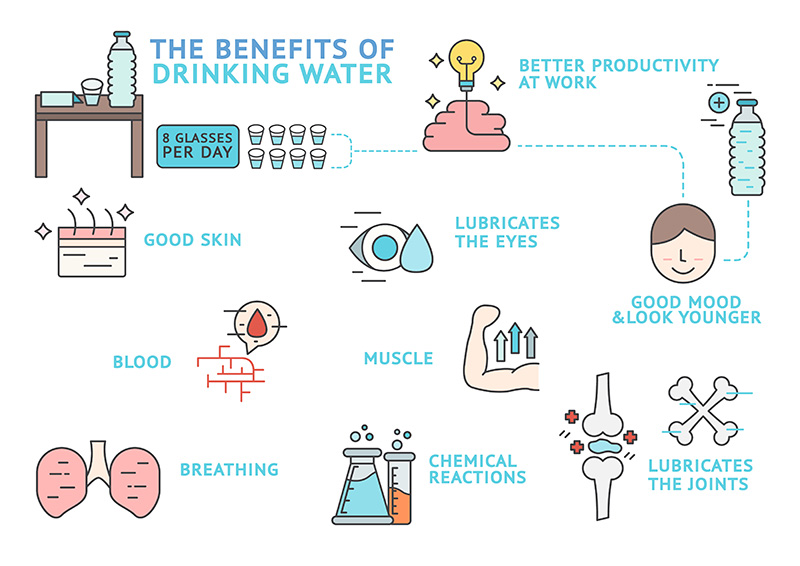Tomato-sized Goals
Returning to Pomodoro, let us assume that we will be focusing on a task for 25 minutes. Here are the steps that you will need to take:
- Breakdown everything you will need to do within your day into 25 minute slots (in the beginning pick a single deliverable instead of an output for the entire day, it will save you from some stress). At the end of each 25 minute sprint you reward yourself with a 5 minute break. Each 25 minute work period is called Pomodoro.
- At the end of four Pomodoros (which is referred to as chunk), you can take a proper break — 15-20 minutes (I tend to stick with a 45:15 ratio).
- Still loving the idea? Download a Pomodoro clock here. Or use your kitchen timer.
Here is an example, let’s say you need to write a 1000-word essay. Estimate the time it will take for you to complete the task. Let’s assume it will take you 2 hours. Divide 2 hours into Pomodoros. In this case you will need four Pomodoros (25 minutes each) to complete the task. Within each Pomodoro, determine what you will be doing. POM1 (research), POM2 (write essay outline), POM3 (finish writing) and POM4 (edit). If it’s taking you longer to complete a task within a Pomodoro carry it forward into the next Pomodoro.
What I have learnt from the Pomodoro experience is that I have a tendency to grossly underestimate the time it takes for me to complete a task (that’s quality controlled). However, this technique helps me adjust my expectations and gives me a focus, a realistic timeframe for task completion and the resource (time) commitment required. While experimenting with this technique keep a tally of your tendency – do you tend to overestimate, underestimate or are spot on with your Pomodoro estimates?
This technique is not embraced by all. There will be times when jumping without planning or analysis, into a task head first will seem like a good idea. Let’s face it, this is an uncertain world. However, planning is a necessary evil. I have been a big fan of spontaneity for a large part of my life. I am now finding myself to be a new ‘aspiring entrepreneur,’ but I’d take off that hat for Pomodoro right now!
Journaling tip
You can try the Pomodoro technique in My Wellness Journal. You can break down tasks and estimate Pomodoros for task completion in the reflection section and track progress either in the “notes section” or in “plan your day” section. Make small circles to denote each 25 minute Pomodoro and cross it out each time you successfully complete it. Add extra circles if you need to.
In a nutshell the Pomodoro time management technique requires you to start with a good WHY and has simple rules: budget your time in short increments and take breaks periodically. You can learn more about Pomodoro here. Pomodoro Is Free.
Words To Grow By
Dwight Eisenhower
“In preparing for battle, I have always found that plans are useless but planning is indispensable.”





